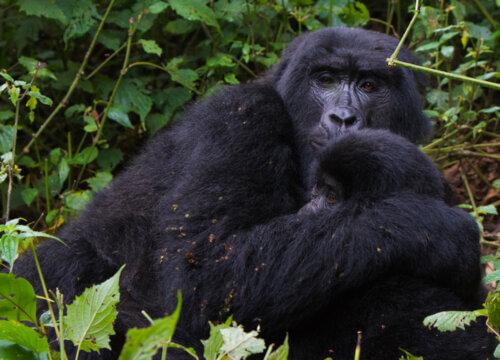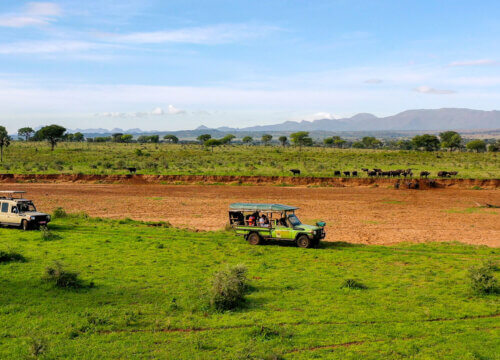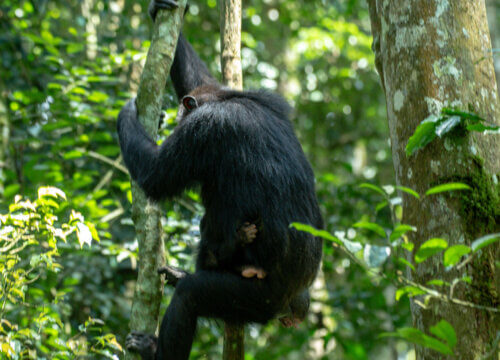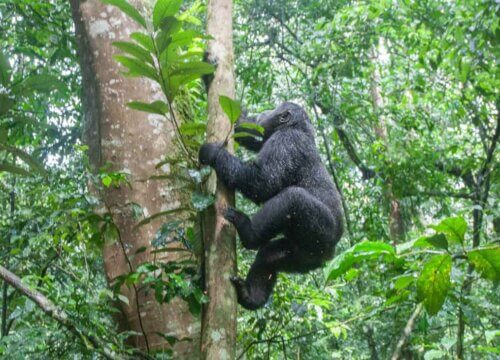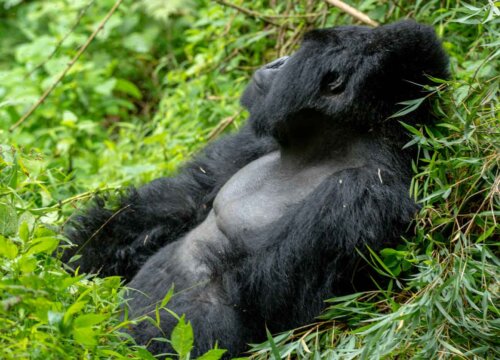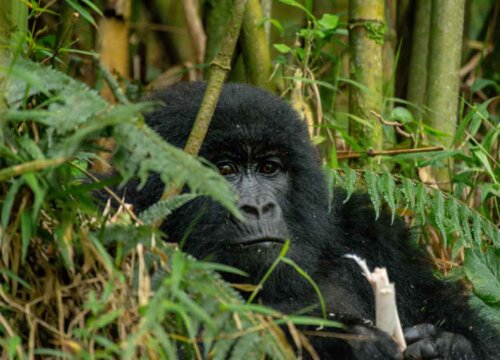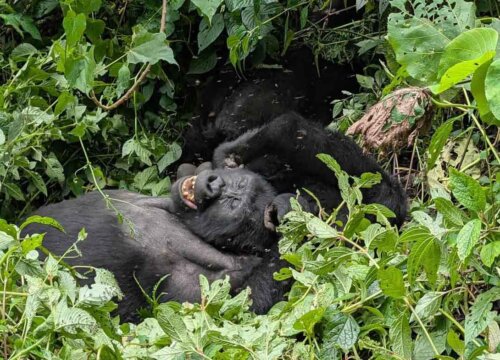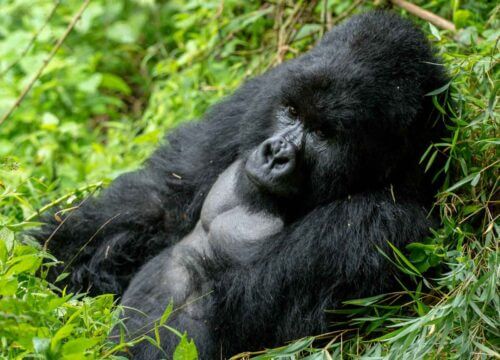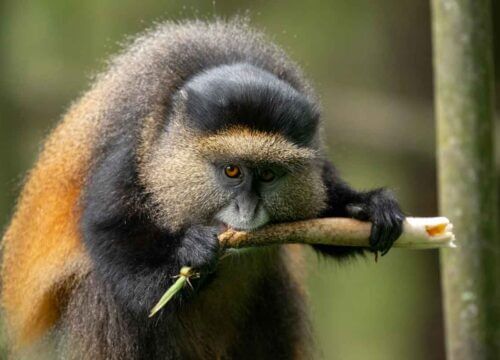Bird watching in Queen Elizabeth National Park
Bird watching in Queen Elizabeth National Park
Bird watching in Queen Elizabeth National Park is one of the most rewarding activity in the park, with more than 600 bird species, Queeen Elizabeth is one of the most diverse birding destinations in Africa. The lush landscapes range from savannah plains to wetlands and forests creating the perfect homes for a variety of birds. Keep your binoculars near for sightings of the majestic African fish eagle, vibrant kingfishers and the elusive shoebill stork. The Kazinga Channel in particular is a hotspot for waterbirds like pelicans and herons.
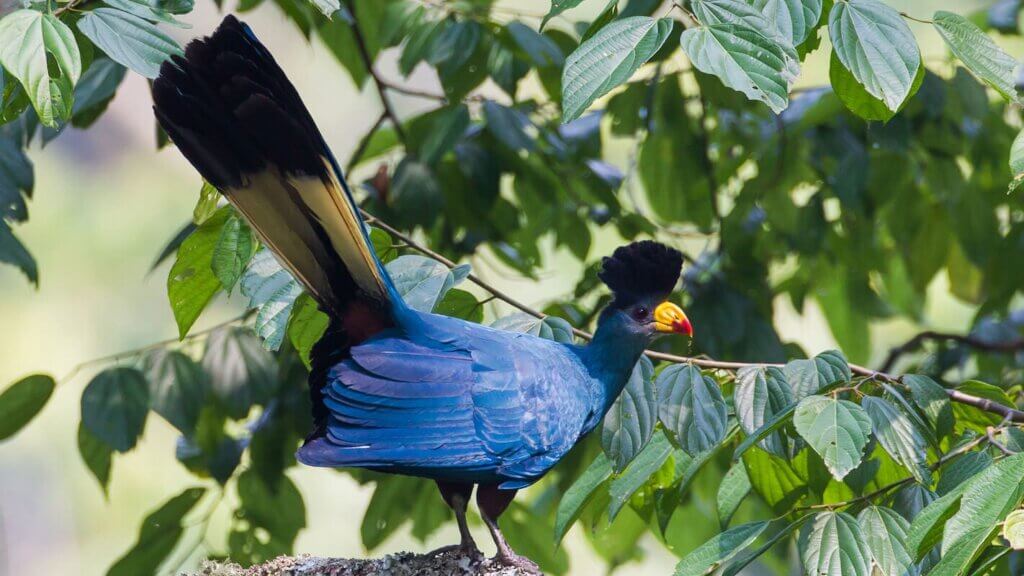
When is the best time to go bird watching in Queen Elizabeth National Park?
Bird watching in Queen Elizabeth National Park is a wonderful way to connect with nature and choosing the right time can make your experience even more rewarding. While birds can be observed throughout the year, early mornings are generally the best time for birdwatching. As the sun rises, birds are most active singing and searching for food after a good night’s rest. The cooler temperatures and calm atmosphere also make this time best for spotting a variety of species.
What bird species are in Queen Elizabeth National Park
African fish eagle. This bird is easily recognizable by its striking white head and powerful call. These majestic birds are often seen perched near water bodies scanning for fish to pounce down.
Shoebill stork. A rare and fascinating species with its large, shoe-shaped bill and prehistoric appearance, it is a must-see for bird enthusiasts exploring the wetlands.
Grey crowned crane. As Uganda’s national bird, the Grey crowned crane is a symbol of elegance and grace. Its golden crown of feathers and gentle character make it a favorite among visitors. Look for them in open grasslands or near water.
Malachite kingfisher. This tiny yet vibrant bird is a jewel of the park’s waterways with its bright blue and orange feathers.
Great blue turaco. It has striking blue, green and yellow feathers make it easy to spot as it moves gracefully through the trees.
African Jacana. Known as the Jesus bird for its ability to walk on floating vegetation in Queen Elizabeth National Park, the African Jacana is commonly found in the park’s wetlands. Its long toes and claws help it cross lily pads with ease.
Black bee-eater. This is a strikingly beautiful bird with a black body accented by blue and red markings.
Palm nut vulture. Its striking black and white feathers and red facial skin make it stand out in the skies or perched on trees in Queen Elizabeth National Park.
Pied kingfisher. The Pied Kingfisher is a master fisherman and a common sight along the shores of lakes and rivers in the park.
African grey parrot. This bird is famous for their intelligence and mimicry skills often heard before they are seen in Queen Elizabeth National Park’s forests. Their gray feathers and red tails make them unmistakable once spotted.
Yellow throated cuckoo. The yellow-throated cuckoo is known for its melodious call. It can be spotted flitting through forested areas in search of insects to feed on.
Lappet faced vulture. Its bald head and powerful beak are adapted for scavenging making it an impressive sight in the savannahs.
Papyrus gonolek. This is known for its striking black and red feathers. Patience is key when trying to spot this shy species in Queen Elizabeth National Park.
White winged warbler. Another papyrus specialist, the White winged warbler can be found flitting among reeds and wetland vegetation. Its subtle beauty and distinct call make it a rewarding sight for keen birders.
Flamingos. Though not as common as other species, Flamingos occasionally visit the park’s saline lakes like Lake Katwe. Their pink feathers and elegant posture make them a delightful surprise for visitors in Queen Elizabeth National Park.
African skimmer. This unique bird is known for its unusual feeding behavior of skimming the water’s surface with its lower beak to catch fish.
Woodland kingfisher
With its bright blue feathers and loud, trilling call, the Woodland Kingfisher adds a splash of color to forested areas and open woodlands alike.
Helmeted guineafowl. These ground-dwelling birds are hard to miss with their spotted feathers and a helmet-like feature on their heads. They often move in flocks across open savannahs searching for seeds and insects.
Martial eagle. The Martial eagle is one of Africa’s largest and most powerful eagles. With its sharp eyesight and massive wingspan, it is a top predator that commands attention wherever it is seen in Queen Elizabeth National Park.
Rufous bellied heron. This small heron with its reddish- brown belly is a charming resident of Queen Elizabeth National Park’s wetlands. It can often be found stalking prey like fish or frogs along shallow waters.
What should I bring for bird watching
- Pack a good pair of binoculars is a must have for any birdwatcher. Birds can often be spotted perched high in trees or flying at a distance and binoculars allow you to observe their intricate details, colors and behaviors closer.
- Pack a notebook and pencil for Jotting down descriptions, locations and behaviors of birds.
- Do not forget a camera with a good zoom lens for capturing the beauty of the birds in Queen Elizabeth National Park.
- Bring long sleeved shirts and pants best for protection against the sun, insects and thorny vegetation.
- Pack a wide brimmed hat to shield your face and neck from the sun while in Queen Elizabeth National Park.
- Bring insect repellent to keep away mosquitoes and other bugs especially if you are exploring wetlands or forested areas.
- Carry a reusable water bottle to refill as needed and pack some light snacks like trail mix or energy bars to keep your energy levels up while you are out in Queen Elizabeth National Park.
What animals live in Queen Elizabeth National Park
Queen Elizabeth National Park is home for wildlife enthusiasts. This diverse ecosystem is home to a wide variety of animals making it one of Africa’s most amazing national parks. Examples of animals you can find in this beautiful park include African elephants, Lions, Leopards, Buffaloes, Hippos, Crocodiles, hyenas, Warthogs, Chimpanzees, Uganda Kob, Waterbucks, Topi, Baboons, Vervet monkeys and Nile monitor lizards.
Explorer More Safaris
- 14-Days Uganda Safari Gorilla Chimpanzees and Wildlife
- 12 Days Gorillas and Chimpanzees Wildlife Safari
- 10 days best of uganda primates & wildlife safari
- 6 Days Gorillas and Chimpanzee Trekking Safari
- 3 Day Bwindi Gorilla Trekking Safari
- 4 Day Uganda Gorilla Trekking and Wildlife Safari
- 4 Days Gorilla Trekking and Adventure Safari
- 5 Days Uganda Gorillas and Chimpanzee Tracking Safari
- 4-Day Rwanda Gorilla Trekking and Golden Monkey Tracking Safari
- 5 Day Gorilla Habituation and Chimp Trekking
- 4-Day Uganda & Rwanda Gorilla Trekking Tour
- 3 Days Bwindi Gorilla Trekking Ugnada from Rwanda
- 10 Days Uganda Primates and Game Safari

